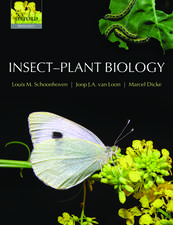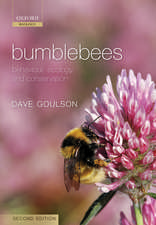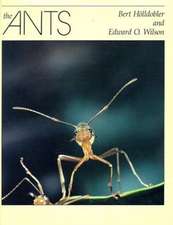Trapping of Small Organisms Moving Randomly: Principles and Applications to Pest Monitoring and Management: SpringerBriefs in Ecology
Autor James R. Miller, Christopher G. Adams, Paul A. Weston, Jeffrey H. Schenkeren Limba Engleză Paperback – 9 apr 2015
Preț: 445.33 lei
Nou
Puncte Express: 668
Preț estimativ în valută:
85.23€ • 88.74$ • 72.03£
85.23€ • 88.74$ • 72.03£
Carte tipărită la comandă
Livrare economică 07-21 martie
Preluare comenzi: 021 569.72.76
Specificații
ISBN-13: 9783319129938
ISBN-10: 3319129937
Pagini: 116
Ilustrații: XVIII, 114 p. 81 illus., 30 illus. in color.
Dimensiuni: 155 x 235 x 10 mm
Greutate: 0.2 kg
Ediția:2015
Editura: Springer International Publishing
Colecția Springer
Seria SpringerBriefs in Ecology
Locul publicării:Cham, Switzerland
ISBN-10: 3319129937
Pagini: 116
Ilustrații: XVIII, 114 p. 81 illus., 30 illus. in color.
Dimensiuni: 155 x 235 x 10 mm
Greutate: 0.2 kg
Ediția:2015
Editura: Springer International Publishing
Colecția Springer
Seria SpringerBriefs in Ecology
Locul publicării:Cham, Switzerland
Public țintă
Professional/practitionerCuprins
Why Care about Small Animals Moving Randomly.- Trap Function and Overview of the Trapping Process.- Random Displacement in the Absence of Cues.- The Geometry of Trap Interceptions.- Interpreting Catch in the Single Trap.- Competing Traps.- Proposed Experimental Method for Measuring C.S.D. of Random Walkers Via a Trapping-Grid.- Trapping to Achieve Pest Control Directly.- Automated Systems for Recording, Reporting, and Analyzing Trapping Data.
Notă biografică
Dr. James R. Miller serves as Distinguished Professor of Entomology at Michigan State University. Dr. Miller’s research centers on insect reproductive physiology, behavior, and chemical ecology. Current basic research projects address mechanisms of moth pheromone disruption, sensory physiology of pheromone reception and host-plant acceptance by herbivorous Diptera.
Textul de pe ultima copertă
Monitoring traps baited with potent attractants of animals like insects have long played a critical role in revealing what pests are present and when they are active. However, pest managers have been laboring without the tools necessary for quick and inexpensive determination of absolute pest density, which is the cornerstone of pest management decisions. This book fills that gap by demonstrating how catch numbers from monitoring traps can be translated into measures of pests per given area of crop and accurate projections of damage.
An unhappy fact of life from the human perspective is that small animals such as insects, mites, mollusks, and nematodes compete severely for our food and fiber. Moreover, some of these creatures vector diseases such as malaria, which kills more than a million humans each year. An imperative of a civilized world is that pests be accurately monitored so that control measures like pesticides are used only when the benefits clearly outweigh the risks to the health of humans, non-target organisms, and the environment.
An unhappy fact of life from the human perspective is that small animals such as insects, mites, mollusks, and nematodes compete severely for our food and fiber. Moreover, some of these creatures vector diseases such as malaria, which kills more than a million humans each year. An imperative of a civilized world is that pests be accurately monitored so that control measures like pesticides are used only when the benefits clearly outweigh the risks to the health of humans, non-target organisms, and the environment.
Caracteristici
The most comprehensive treatise on trapping ever produced from highly theoretical and fundamental research to very practical applications to all of agriculture This book communicates complex concepts in language understandable by readers across a wide range of educational backgrounds This book offers a number of important new equations for ecology and pest management Includes supplementary material: sn.pub/extras

























